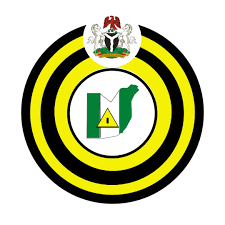
The DRTS Public Relations Officer, Mr. Kalu Emetu, made this known in an interview in Abuja on Wednesday.
Emetu said that the development was sad as those motorists ply the roads without the required documents.
He said that the essence of the licence was to prove that the holder passed through some training and was authorised to drive on Nigerian roads.
According to him, the over 15,000 licences were approved and produced within one year by the service but left lying on shelves.
He, however, said while some of the motorists might have deliberately refused to collect the licence, others may have relocated from the FCT.
“When calls are placed to inform them that their licences are ready, the response is often that they have relocated and will come for it when they are in town,’’ he said.
Emetu said that the directorate issues about 70,000 licences annually and receives an average of 150 to 200 applications daily.
He pointed out that the DTR office in Mabushi was one of the biggest drivers licence capturing centres nationwide.
On reckless driving and speeding, he said there was an improvement in the attitude of motorists in Abuja.
He said that the FCT Model Driving School had helped to change the attitude of drivers in the territory.
“Many have been forced to learn the road signs and most times keep to speed limits which has positively impacted on the rate of accidents in the FCT.
“Research has shown that most accidents in the nation’s capital are traced to speeding, as the city has good roads compared to most states of the federation,’’ he said.
The spokesperson further said the service for some time had beamed its search light on commercial motorcyclists and tricycle riders who had constituted themselves to traffic nuisance in the city.
“They are made to operate in the areas the FCT traffic regulation allows them to operate although it has not yielded the desired result.
“While the tricycles are expected to operate within the estates to provide last mile journeys, the commercial motorcyclists are restricted to the satellite towns and other suburbs.
“The drivers’ Testing and Training unit of the DRTS and the FCT Model Driving Institute are training motorists on the right road culture.
“Traffic offenders are compulsorily referred to the institute where they are drilled on the interpretation of road signs for corrections while DTT unit makes drivers’ license holders to recite the road signs before renewal,’’ Emetu said.
According to him, the essence is to ensure that people get acquainted with the knowledge to drive safely on the road.
He explained further that the directorate’s through its DTT unit, tests and certifies applicants for fresh licence by doing a general evaluation of practical driving tests.
“But before all these, it is expected that they have gotten all the required training from any recognised driving school.
“What the unit does is to reconfirm by taking prospective drivers to the road to ensure that he or she understood what was taught at the school, mostly road signs and how to obey them,” he said.
On vehicle licence acquisition, the DRTS spokesperson said that in most of the states, Vehicle Inspection Offices, State Board of Internal Revenue and Federal Road Safety Corps (FRSC) were involved.
“But in FCT, DRTS has a peculiar role and it occupies a dual position in the area of revenue and evaluation.
“For the evaluation, the technical authorisation of licence is done by the DRTS, while the production with the aim of achieving harmonisation and biometric capturing are performed by the FRSC,’’ he added.
Emetu added that the essence of the tripartite arrangement was to ensure that issues like delay printing of licence, failed enrollment, and other issues were addressed at a larger forum. (NAN





